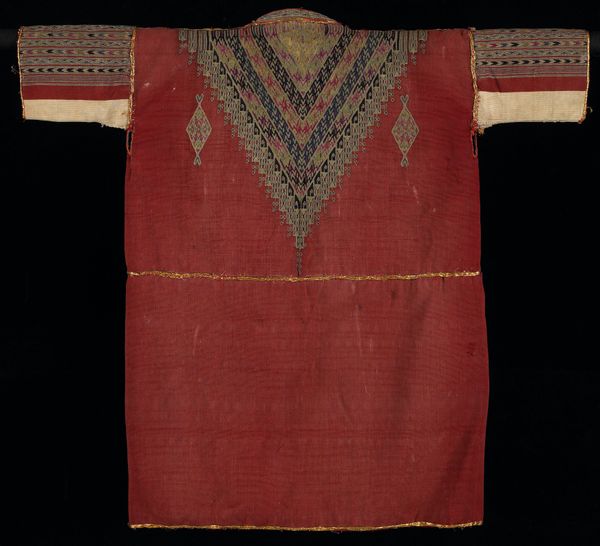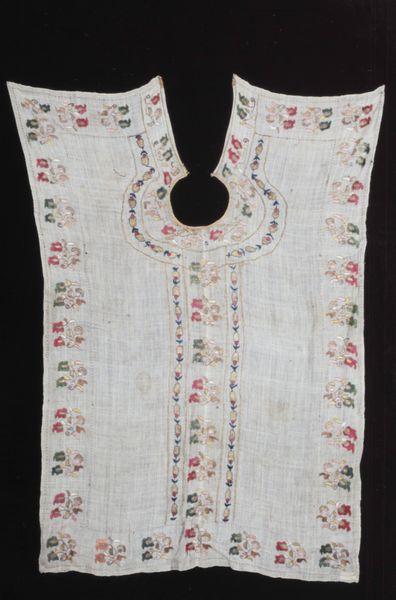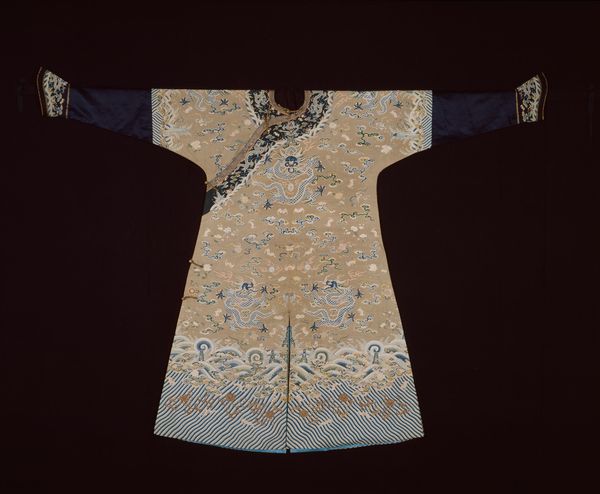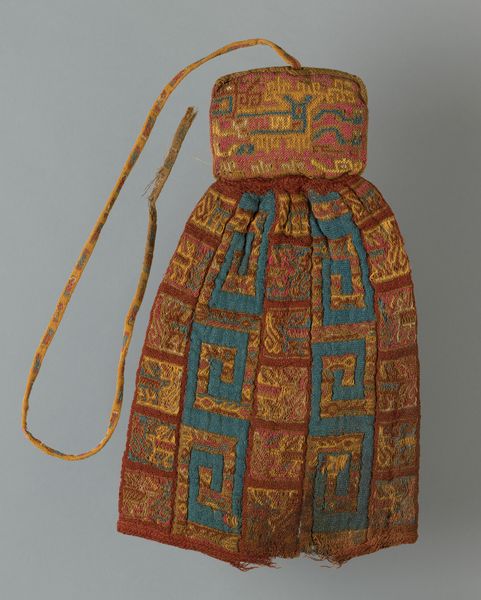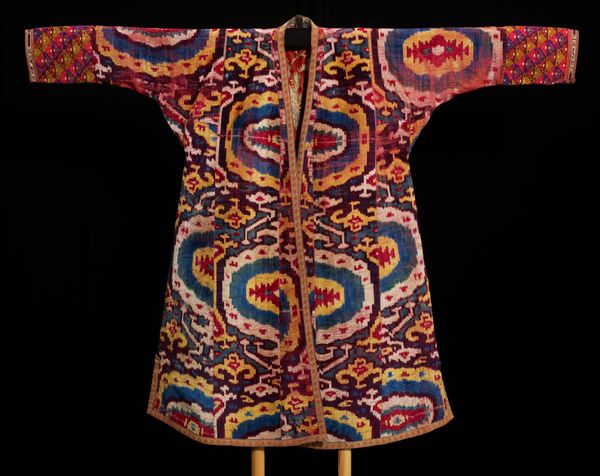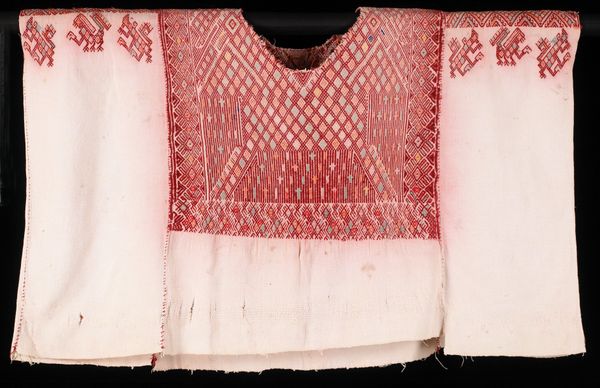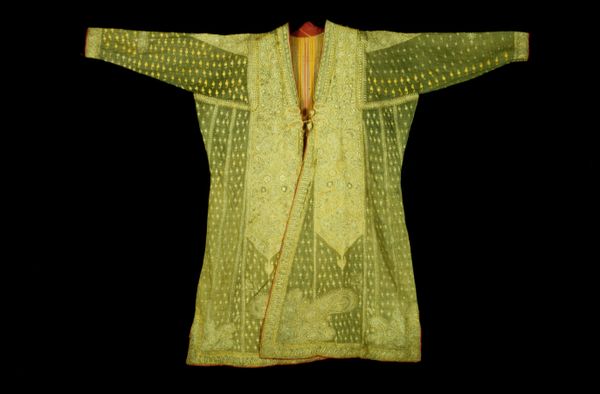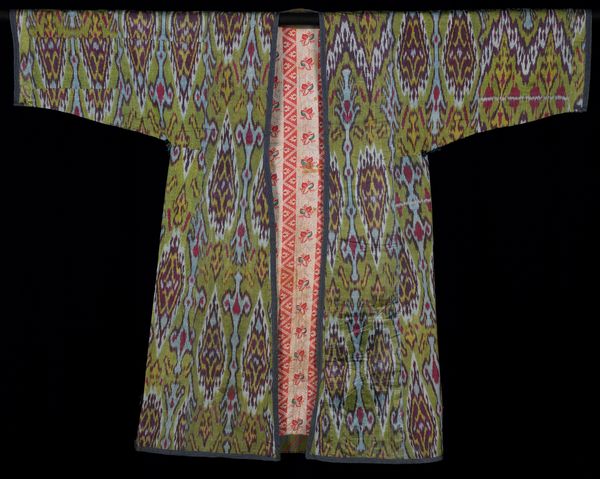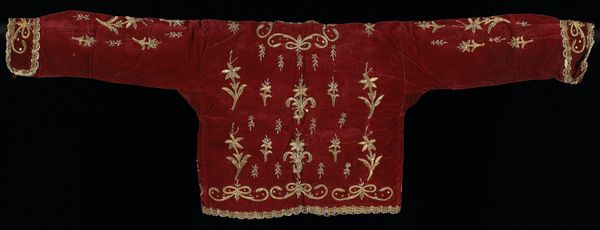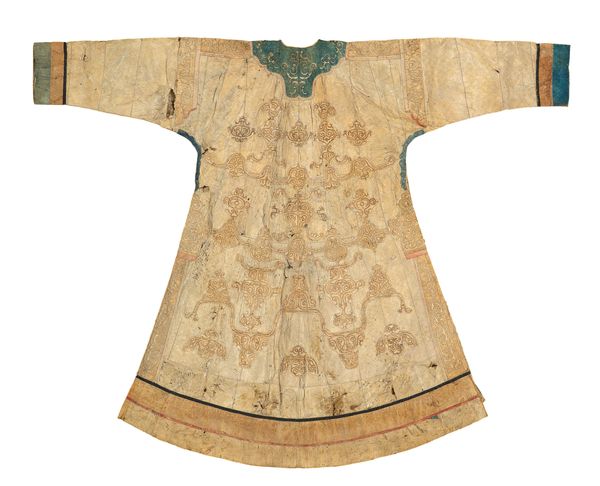
fibre-art, textile
#
fibre-art
#
textile
#
textile
#
geometric
#
indigenous-americas
Dimensions: 39 1/4 x 59 in. (99.7 x 149.86 cm)
Copyright: Public Domain
Editor: Here we have a hunting coat made around 1750 by the Innu, also known as the Naskapi people. It's made from woven textile. The delicate red linework against the pale fabric gives it such a quiet, dignified presence. What do you see in this piece? Curator: What I see is a powerful act of cultural preservation and resistance. This coat isn't just clothing; it’s a statement. Consider the context: mid-18th century. Indigenous communities across North America were facing increasing colonial pressure. What do you think it meant for the Innu to create and wear something like this? Editor: Well, the patterns almost look…European? Is that intentional? Curator: Exactly. Scholars argue that the Innu actively negotiated their identity through their clothing. The geometric patterns might reflect introduced European motifs, but adapted and re-contextualized within an Innu worldview. It speaks to a complex relationship of influence, adaptation, and resilience. Does seeing that shift how you understand the coat’s quiet dignity? Editor: It does! I initially saw the coat as something very insular, about a single culture. Now I see it as evidence of cultural dialogue. It represents how the Innu were engaging with the outside world while maintaining their own distinct identity. Curator: Precisely! And by understanding this dialogue, we challenge simplistic narratives of colonization and recognize Indigenous agency. So, what’s your takeaway from this piece now? Editor: I now see it as less about the visual aspect and more about what it meant for a whole group of people during enormous change. Curator: And perhaps that meaning continues to evolve with each viewing. Editor: Absolutely, it’s really broadened my understanding. Thanks so much!
Comments
minneapolisinstituteofart about 2 years ago
⋮
This coat was made to communicate with animals and the divine. In the 1700s, in the far reaches of northern Labrador (now in Canada), Innu (Naskapi) men dressed up in elegant, tailored coats—not to court beautiful women but to attract caribou. Made of creamy white caribou hide and elaborately decorated, the coats pleased Papakassik, an Innu holy being, and mesmerized the animals. Drawn to the coat made especially for it, the caribou would give its life to the hunter.
Join the conversation
Join millions of artists and users on Artera today and experience the ultimate creative platform.
